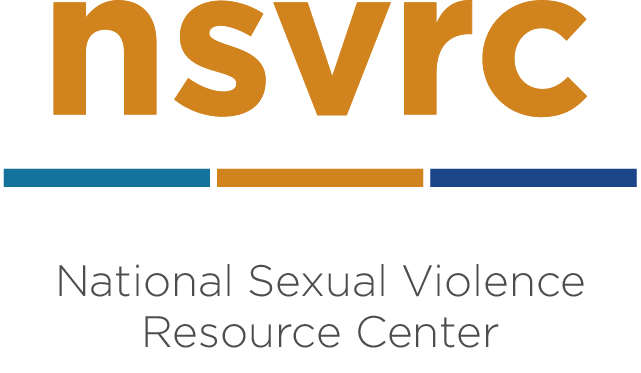This is the second excerpt of a two-part interview. Be sure to read the first part here.
4. When an American Indian woman or girl goes missing due to sex trafficking, are there differences in the process of reporting to law enforcement on tribal and non-tribal lands?
I don’t believe so, and rarely does a family member feel like identifying that she’s being trafficked. Homegrown trafficking is the most common type of trafficking, for over 80% of people being trafficked, it’s homegrown. It could mean a domestic partner. It could be a family member. So I think that when a woman is reported
https://www.nsvrc.org/blogs/resource-online-magazine/part-2-inequity-and-increased-risk-sex-trafficking-american-indian
Nov 10, 2023
https://www.nsvrc.org/blogs/resource-online-magazine/part-1-inequity-and-increased-risk-sex-trafficking-american-indian
Nov 10, 2023
This is the first excerpt of a two-part interview. Be sure to read the second part here.
1. It wasn’t until 1999 that the Department of Justice released crime data relating to American Indian people. How has this deficit in data collection impacted indigenous organization’s ability to advocate for their cause? Have you/your organization noticed any changes since that data collection has expanded and been more common?
So I started at the agency in August of 2020, which was long after the data collection happened. However, I do think that there are some challenges that still exist in terms of
https://www.nsvrc.org/blogs/resource-online-magazine/part-2-no-rape-documentary-visionary-black-filmmaker-reflects
Nov 10, 2023
This is the second excerpt of a two-part interview. Be sure to read the first part here.
5. There is a brief scene in the documentary in which you depict a slave owner sexually assaulting a slave. When filming this scene, what did you do to ensure feelings of safety on set for the actress as both a woman and as a Black person?
That scene is a reality that probably almost every single Black person has in terms of their ancestral lineage. That’s based on my third great-grandmother, who was raped by the man who owned her. As the director, we had many acting rehearsals and discussions. On the
https://www.nsvrc.org/blogs/resource-online-magazine/part-1-no-rape-documentary-visionary-black-filmmaker-reflects
Nov 10, 2023
Note: NO! The Rape Documentary is the 2006-released, Ford Foundation-funded, groundbreaking feature length film that focuses on intraracial rape of Black girls and women, healing, and accountability through the first-person testimonies, scholarship, spirituality, activism, and cultural work of Black people in the United States.
This is the first excerpt of a two-part interview. Be sure to read the second part here.
1. In 2006, you released NO! The Rape Documentary. Was it difficult to get a documentary like this made and distributed in this time period? How was it received at the time and
https://www.nsvrc.org/blogs/resource-online-magazine/directors-viewpoint-racial-equity-movement
Nov 10, 2023
Three years ago, the filmed murder of George Floyd sent shockwaves throughout the world. It inspired a revitalization of racial justice movements, and its legacy can be found in the increased awareness and conversations about the many ways in which racism is still interwoven in the fabric of our society. Yet, as the years have gone past, we have observed a pushback against DEI in company culture, the teaching of the history of racial oppression in schools, and an overwhelming sense that the conversation of racial equity is “over”. At NSVRC, we believe that conversation can never be “over”,
https://www.nsvrc.org/blogs/resource-online-magazine/racial-equity-movement
Nov 09, 2023
NSVRC is committed to continuing the ongoing conversation about racial equity in the sexual violence movement. For the theme of this issue of The Resource, we emphasize that racism, and all forms of oppression, are inextricably tied to sexual violence. Racial equity must be at the forefront of our efforts to respond to and prevent sexual harassment, assault, and abuse.
This edition also marks the inaugural issue of The Resource delivered to readers in a fully digital format as an online magazine. For long-time readers, we hope The Resource online magazine continues to deliver articles and
https://www.nsvrc.org/blogs/press-releases/nsvrc-awarded-500000-increase-capacity-organizations-serving-survivors-sexual
Oct 24, 2023
Funding supports joint efforts with the National Alliance to End Sexual Violence to bolster trauma-informed and culturally relevant services for children, individuals, and families
HARRISBURG, PA –The National Sexual Violence Resource Center (NSVRC) was awarded $500,000 as one of two Sexual Assault Capacity Building Centers that will work to improve trauma-informed, developmentally sensitive, and culturally relevant services for survivors of dating violence, domestic violence, and sexual assault nationwide. This award was funded as a part of 39 new competitive discretionary grants
https://www.nsvrc.org/blogs/new-nisvs-data-sexual-violence-and-sexual-identity-key-findings-and-prevention
Oct 10, 2023
The Centers for Disease Control and Prevention just released a new report, The National Intimate Partner and Sexual Violence Survey: 2016/2017 Report on Victimization by Sexual Identity. This report highlights findings from the National Intimate Partner and Sexual Violence Survey (NISVS) specific to sexual identity. This report fills gaps in research about the lifetime experiences of sexual violence, stalking, and intimate partner violence experienced by U.S. women and men separately by sexual identity. This report focuses on the recent findings from NISVS of lesbian, gay, bisexual, and
https://www.nsvrc.org/blogs/planning-photovoice-power-consent-and-safe
Sep 26, 2023
Guest blog post by Laura Lorenz, PhD, MEd and Diana Weggler, Photovoice Worldwide
Since 1992, Photovoice has been used by people all over the world as an action research tool to create positive change. A participatory visual approach using photographs and captions, Photovoice creates opportunities for people with valuable lived experience—referred to as co-researchers or co-creators—to have a voice in the decisions that affect their health, lives, and communities.
Sexual violence prevention staff have key facilitation skills and an understanding of the power inherent in the Photovoice method
https://www.nsvrc.org/es/blogs/lecciones-sobre-como-prestar-servicios-los-sobrevivientes-masculinos-traves-de-sasp-alcance-y
Sep 18, 2023
Para obtener más información sobre las mejores prácticas al trabajar con hombres sobrevivientes de agresión sexual, NSVRC revisó los datos de servicios a víctimas de la Iniciativa de medición de la efectividad de la Ley sobre la violencia contra la mujer 2017 del Programa de Servicios ante la Agresión Sexual (SASP). El programa de subvenciones según la Fórmula SASP financia programas contra la agresión sexual y otras organizaciones a fin de proporcionar servicios a los sobrevivientes de agresión sexual. Estábamos interesados en saber cómo los programas utilizaban este financiamiento para
Pagination
- Previous page
- Page 6
- Next page








